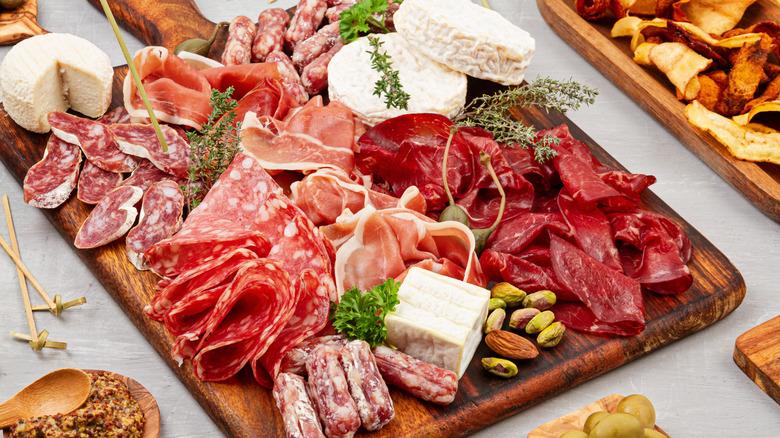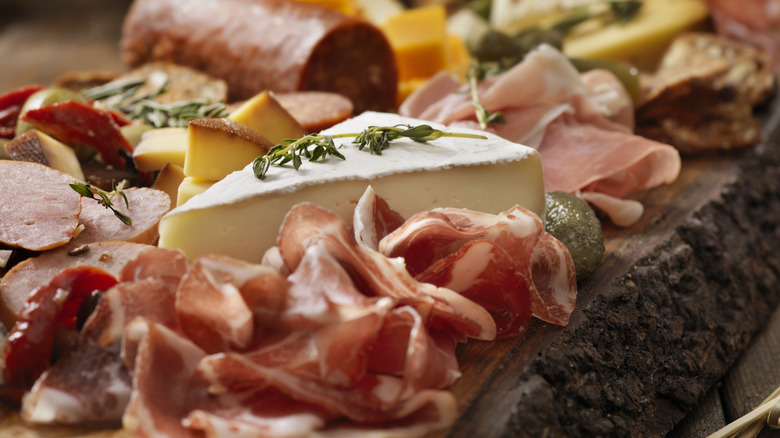The Difference Between A Grazing Table And Charcuterie Board
Grazing tables are ideal presentations to offer snacks and lighter dishes for events and larger gatherings, as an assortment of food items can be set out for guests to choose from and create plates of their liking. Packed with various meats, chips, cheeses, nuts, crackers, and fruit, the surface of an entire table can be covered in trays and dishes of various ingredients. Presentations can vary, with seasonal foliage surrounding wooden cutting boards to bowls of dips and condiments surrounded by a hodgepodge of finger foods waiting for guests to pick up and snack on.
Whether decorated with floral centerpieces or punctuated with elegant candles, these expansive spreads of food can be organized according to a theme or specific food groups. While different charcuterie boards may be part of a grazing table, these smaller boards of meat and cheeses represent a much more compact serving of the expansive offerings provided by the lively and entertaining setup of a grazing table.
Making hosting duties easier
When building a charcuterie board, both professional and at-home chefs can consider the types of cheese, meats, and accouterments that will be offered as part of a spread. While these platters of meat and cheese can be a delightful way to kick off a meal or present while drinks are being poured, the actual boards packed with ingredients do not necessarily need to fill up the same amount of space and surface area that a grazing table provides.
The format of a charcuterie board offers hosts and hostesses the flexibility of choosing ingredients to suit dietary preferences or to include items that complement the rest of the event. A carefully constructed charcuterie board can easily take center stage of a happy hour or wake-up appetites before main courses are served. For smaller gatherings, one or two charcuterie boards can suffice; for larger events, however, a grazing table may be what you need to keep guests happy, fed, and full.

